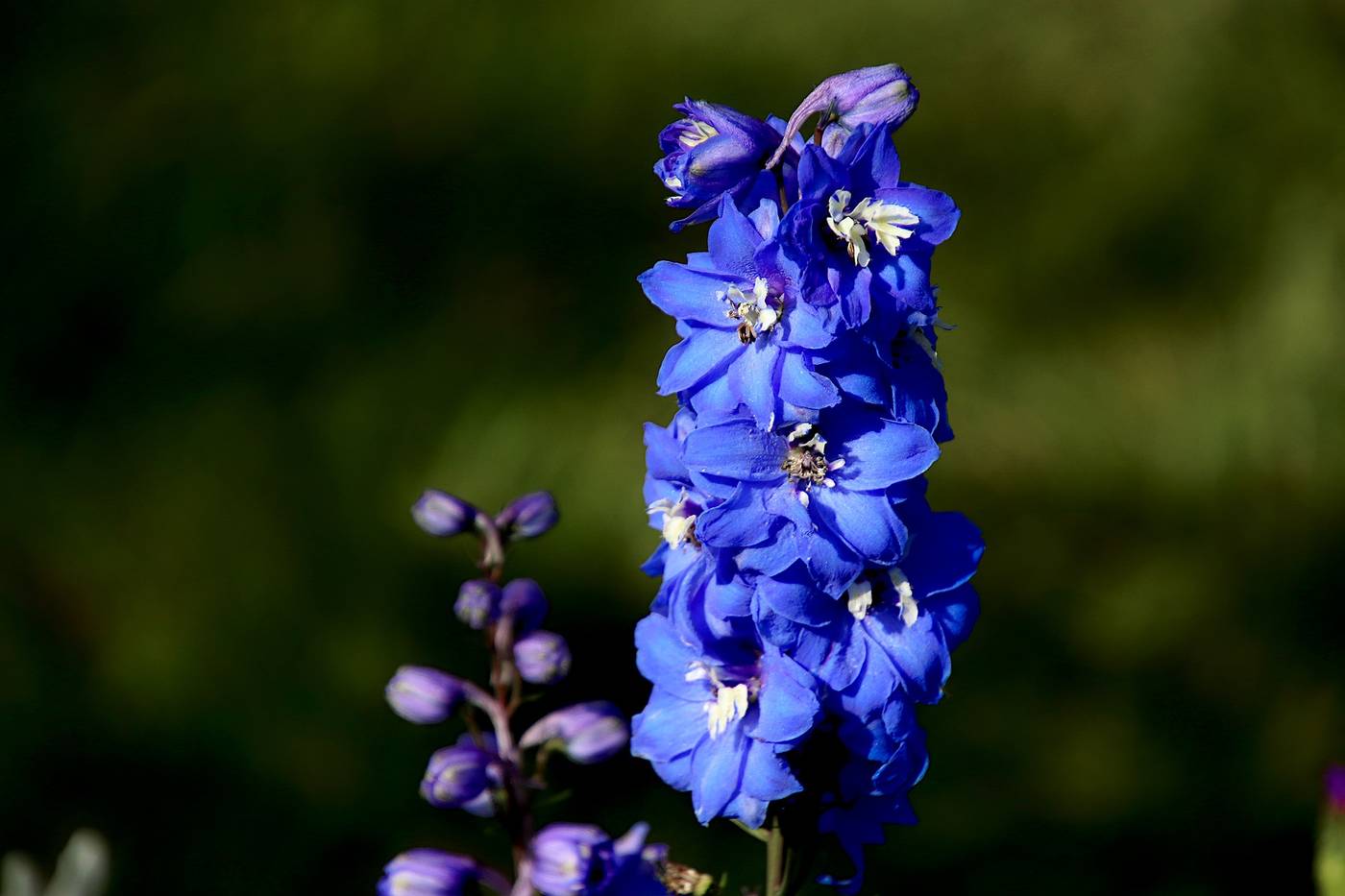Updated: March 4, 2020
The name delphinium derives from the word delphis, which means “dolphin.” The flowers do indeed resemble small dolphins frolicking along the stems. Delphinium are the symbolic flower assigned to those born in the month of July, and are said to symbolize an open heart and a generous, giving nature. Europeans and Native Americans used the dark blue-purple flowers to make blue textile dye, and carried larkspur to ward off scorpion stings. Today, delphinium are often used in cottage gardens to give an old-fashioned feel to garden design, or used within floral arrangements to add cool spikes and splashes of color to mixed bouquets.
 Delphinium flowers offer beautiful dark purple or blue flowers for mixed arrangements.
Delphinium flowers offer beautiful dark purple or blue flowers for mixed arrangements.
Types
There are numerous types of delphinium. These include:
» Belladonna delphinium – The belladonna type of delphinium is the most common type, and the one florists are most familiar with incorporating into designs. Belladonna delphiniums consist of tall, robust floral spikes with multiple flowers set along the central stem. The spikes are quite strong, and some types can grow as tall as four to five feet, making them ideal for larger arrangements. These are in season starting in mid to late summer.
» Delphinium chinensis – Delphinium chinensis has a more compact, rounded form, with flowers forming closer to the foliage. While used more in garden beds than in cut flower arrangements, they do make beautiful cut flowers and can be used as filler flowers in arrangements. They are in season throughout the summer.
» New Milleniums – New Millenium delphiniums were developed in New Zealand, and are especially prolific, producing massive blossoms on very strong four to five foot stems.
» Pacific Giants – Pacific Giant delphiniums are the latest addition to the hybrids available. Each four to five foot stalk carries massive 3-inch double flowers, a striking addition to both garden beds and arrangements.
Colors
Delphiniums are noted for their striking dark blue or purple-blue color, but more colors are available. In addition to these rich blue hues, various shades of lavender, purple and purple-pink are available, as well as red and white. The traditional delphinium color is dark blue.
Uses
Tall delphinium spikes can be used in floor arrangements and large arrangements as focal points. The shorter chinensis varieties and some of the belladonna varieties make good filler plants for arrangements. They are rarely used alone in bouquets, and are most frequently combined with other blue, white and lavender summer or early fall flowers for seasonal bouquets.
Purchasing hints and care
When purchasing delphinium flowers, buy ones with open blossoms near the bottom of the stem and tightly closed buds near the top. The blooms open from the bottom, so closed blossoms near the top means that the flowers have several more days left to reach peak blooming time.
Florists should be especially diligent about avoiding delphinium spikes with mildew on the leaves. Delphiniums in the garden are especially prone to mildew and cut flowers containing mildew spores can actually spread mildew in an arrangement, causing the flowers to fade faster.
To condition flowers for use, remove all foliage that will be immersed in water and remove any foliage suspected of containing mildew. Cut the stems under water with a sharp knife. Before storing delphiniums, immerse the cut stems in warm water and commercial floral preservative for one to two hours before placing them in a cool location.
Costs
Wholesale prices for delphiniums vary widely, depending on the time of year and the type selected. Belladonna delphiniums, the ones most frequently used in floral arrangements, are the least expensive. Florists should expect to pay approximately $10 for a group of 10 stems, or $1 apiece for the common dark blue delphinium. Other varieties can easily cost double or triple that amount and delphiniums purchased during their off-season will also be pricey. U.K. prices start at around £ 0.60 per stem for belladonna types. As in the United States, the prices rise with the rarity of the delphinium type, and also rise after the flowers go out of season in October.
image 1: Pixabay; image 2: Sue1454 via Compfight cc
